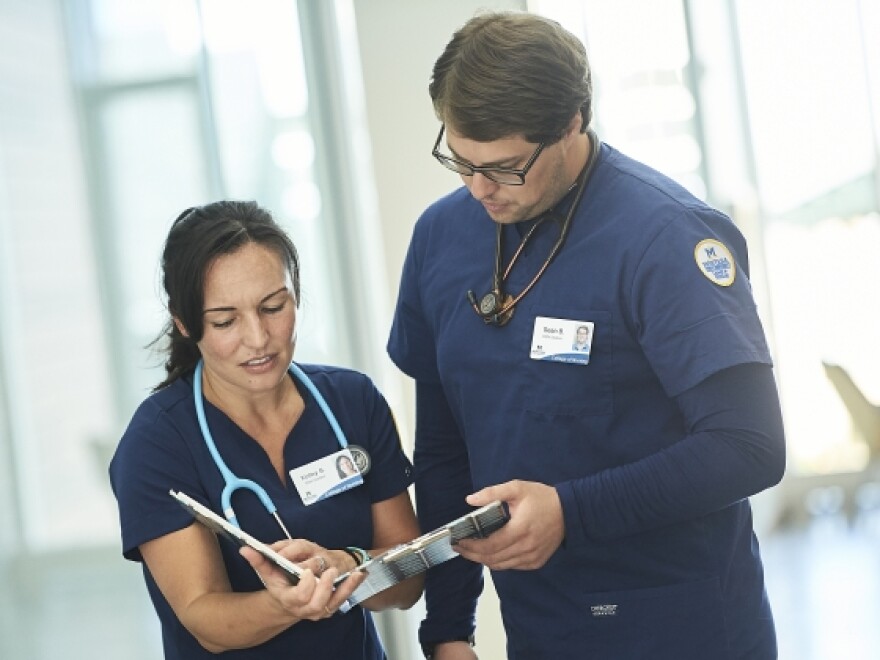While over half of Montana’s population is considered rural, about 40 percent of the state’s primary health care providers are based in just three cities. That means many people don’t get the care they need or have to travel long distances to find it. A new program aims to change this by giving nurses additional education specific to working in rural communities.
Sarah Nordlund grew up on a ranch in northeast Montana. She says she had an interest in health care from a young age and became a certified nurse’s assistant when she was 15. When she received some scholarships from Garfield County, Nordlund says she knew she would return.
“Felt like it was my responsibility to give back to the community," Nordlund said.
Nordlund is now the director of nursing at the Garfield County Health Center in Jordan.
“Our county is similar to the state of Connecticut in size, so some people have to drive a half hour to get to our facility and then we’re 83 miles from the nearest higher level of care,” Nordlund said.
She says she likes working in a rural community but it does require some special skills, like resourcefulness and an eagerness to learn. Often, a nurse will be in charge of covering the ER.
“If you go to the emergency room in Billings or Great Falls or any of those places, they have somebody that comes in and does your lab, does your x-ray, mixes your drugs and brings them to you. Out here, we do all of that on our own," Nordlund said.
To help fill a health care gap in Jordan, Nordlund is working towards becoming a nurse practitioner through Montana State University. Her degree will allow her to diagnose patients, write prescriptions and do a lot of the same things that doctors do.
The Doctor of Nursing Practice is a rigorous, three-year program. But this fall, students like Nordlund will have an opportunity to get even more training that’s geared towards rural Montana.
The new Rural Ready Nurse Practitioner Program trains students on suicide prevention and advanced life and trauma support. People accepted into the program will get mentorship at rural healthcare facilities and learn how to use tools like Telehealth to consult with remote healthcare specialists.
The 20 doctoral students selected for Rural Ready will also be eligible to receive up to $17,500 per year to help pay for tuition, text books and travel.
“Lots of times, people assume that, ‘Oh, I can’t move so I can’t go to school,’ but we really try to let people know that doesn’t have to be the case,” says Stacy Stellflug, an assistant professor of nursing at MSU and the director of Rural Ready.
She says most of the coursework is online, which works well for people who live in rural communities and may have work and family obligations.
MSU offers the cooperative WWAMI Medical Education Program in partnership with the University of Washington School of Medicine.
Still, Stellflug says a lot of doctors and specialists come from out of state. Many of them have trouble adjusting to life in a small town and move on after a few years. As someone who grew up in Glasgow, she says she knows first hand what kind of impact this can have.
“They show up. They’re there for a couple years, and then they leave. That’s really hard on families that live in rural communities. I know it was hard on my family as well to have that rotating door of providers and never really get that one who was basically part of your family," Stellflug said.
About 80 percent of the graduates from MSU’s Doctor of Nursing Practice stay in the state as nurse practitioners. With the new Rural Ready program, Stellflug is hopeful more of them will continue to put down roots in communities where they are needed most.
She and her colleagues are currently in the process of reviewing the Rural Ready applications for this fall’s class.




